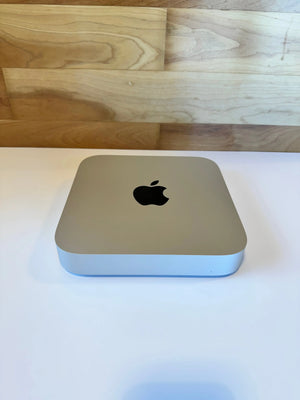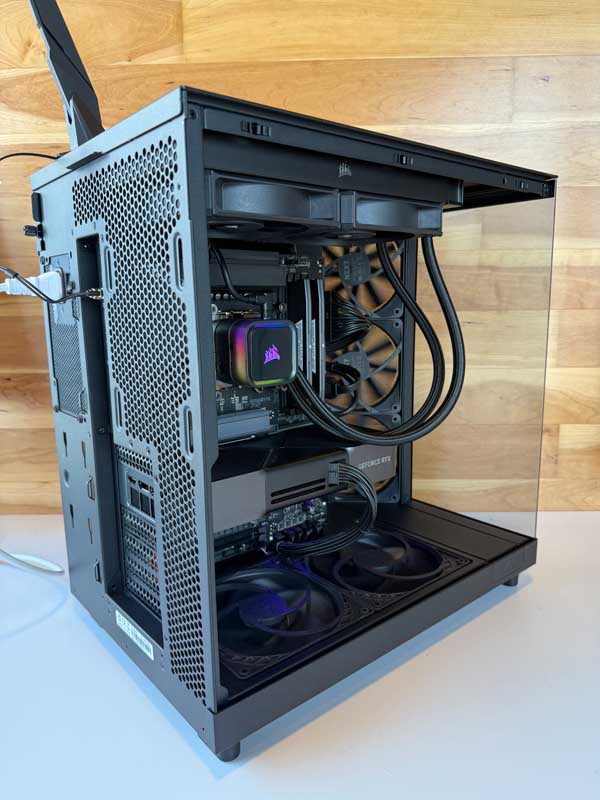
Best Computers for Foundry Nuke
Purpose-built Nuke workstations for compositors who need rock-solid performance, fast previews, and reliable renders — built & supported by DC Computers in San Diego.
Why Nuke Workflows Need Tuned Hardware
Node-based compositing stresses your system differently than linear editors. Heavy keying, multi-layer comps, deep EXRs, large plate resolutions, and GPU-accelerated effects all hit the CPU, GPU, memory, and storage at once. A general “fast PC” isn’t enough — you need the right balance of high-clock CPU for interactive responsiveness, ample GPU VRAM for large frames and denoising, fast NVMe storage for cache/scratch, and plenty of RAM so your comps don’t bottleneck mid-shot.
Recommended Hardware (Guidelines)
CPU (Processor)
-
High clock speeds drive snappy UI, quick script evaluation, and fast single-threaded nodes.
-
Moderate core counts help with background renders and multi-tasking without sacrificing frequency.
- For studios juggling comps, rendering, and other tools, consider a higher-core workstation platform for concurrency.
GPU (Graphics & VRAM)
- Nuke leverages the GPU for many operations; more VRAM helps with 4K/6K/8K plates, deep data, and ML-powered tools.
- Favor professional-grade stability and driver support when your pipeline includes SDI monitoring or color-critical stages.
- For GPU renderers (e.g., Redshift/Octane) used alongside Nuke, size VRAM accordingly and consider multi-GPU designs.
Memory (RAM)
- Compositing with high-bit-depth EXRs and many layers eats memory; 32–64GB is a strong baseline for most artists.
- Large shows, deep comp, or multi-app pipelines benefit from 96–128GB+ to avoid paging and cache thrash.
Storage (Scratch, Cache, Project)
- Use a fast NVMe SSD as your Nuke cache/scratch for responsive scrubbing and previewing.
- Keep a separate NVMe for OS/apps and another for active projects; archive to large SATA SSD/HDD or NAS.
- Adopt a tiered storage approach with regular backups. We can integrate NAS or cloud workflows.
Monitoring, I/O, and Thermals
- For broadcast/film review, add SDI/HDMI I/O and calibrated reference displays.
-
Quiet, cool chassis keeps clocks high and sessions comfortable during long render days.
Smart Build Paths (Examples)
Compositor’s Daily Driver
- High-clock desktop CPU for ultra-responsive UI and node evaluation
- Mid-to-upper GPU with solid VRAM for 4K plates
- 64GB RAM, dual NVMe (OS/Apps + Cache), project SSD
GPU-Accelerated Comp & Denoise
- Fast CPU + high-VRAM GPU for ML tools and denoisers
- 96–128GB RAM for complex EXR stacks
- Triple NVMe (OS, Cache, Projects) + NAS integration
Studio Concurrency Workstation
- Higher-core workstation CPU for comping + background renders
- Single or dual GPUs depending on renderer needs
- High-capacity NVMe + RAID options, SDI I/O, calibrated review chain
Workflow Tips for Faster Nuke
- Place cache/scratch on dedicated NVMe and keep 20–30% free for peak speeds.
- Standardize on project codecs and bit-depth to reduce conversions mid-comp.
- Use display-calibrated monitors and, if needed, SDI output for client review.
- Implement versioned backups (local + NAS/cloud) to protect shots and scripts.
Built & Supported by DC Computers in San Diego
- Custom Nuke workstations tuned to your studio pipeline
- Upgrades, diagnostics, color-accurate display setup
- NAS design, backup/restore, and on-site/remote support
- Local warranty and fast turnarounds since 2001
Foundry Nuke – Frequently Asked Questions
Is Nuke more CPU or GPU dependent?
Both matter, but for interactive responsiveness and node evaluation, high-clock CPU is key. For GPU-accelerated nodes, denoisers, and larger frame sizes, a robust GPU with ample VRAM keeps previews smooth and reduces wait time.
How much RAM do I need for Nuke?
32–64GB is a solid baseline for most comps. For deep EXR stacks, 4K/6K plates, or multi-app workflows, 96–128GB+ helps avoid paging and cache thrash.
What storage layout is best for Nuke?
Use separate NVMe SSDs for OS/Apps, Cache/Scratch, and Active Projects. Archive to larger SATA SSD/HDD or NAS. This keeps previews responsive and renders consistent.
Can you integrate SDI/HDMI monitoring and color-accurate review?
Yes. We configure I/O cards, calibration tools, and reference-grade displays for accurate reviews and client sessions.
Do you support mixed pipelines (Nuke + 3D or GPU rendering)?
Absolutely. We’ll size CPU, GPU VRAM, RAM, and storage to handle Nuke plus Maya/Blender/Houdini, and GPU renderers like Redshift, Octane, and V-Ray.















































